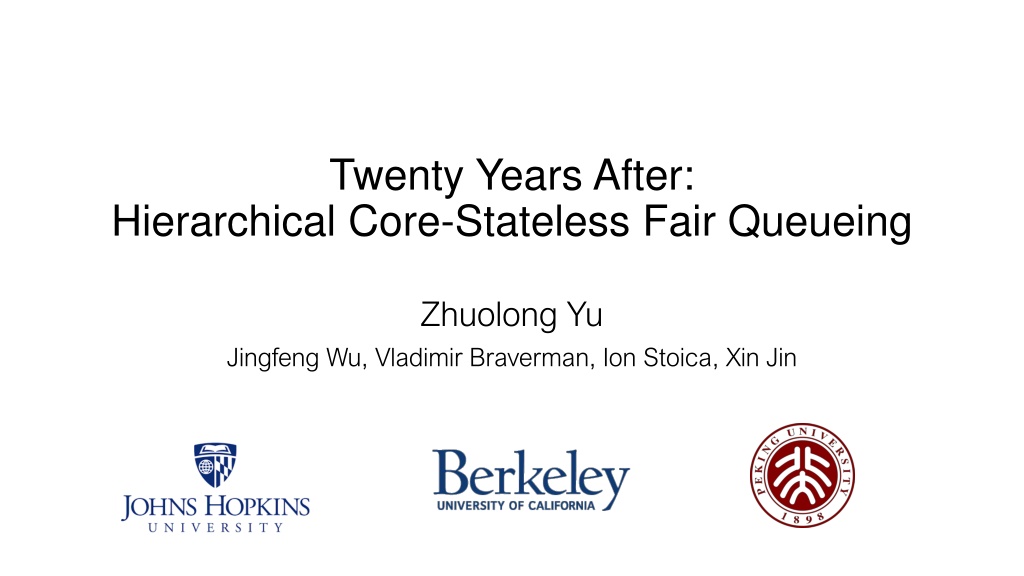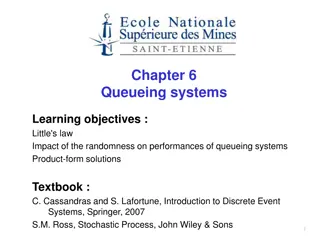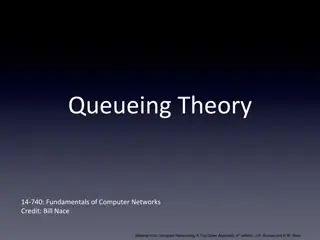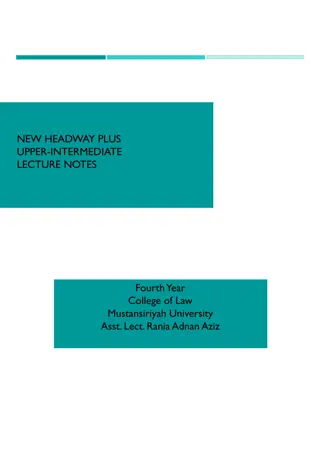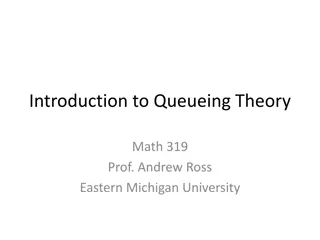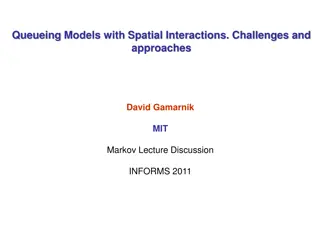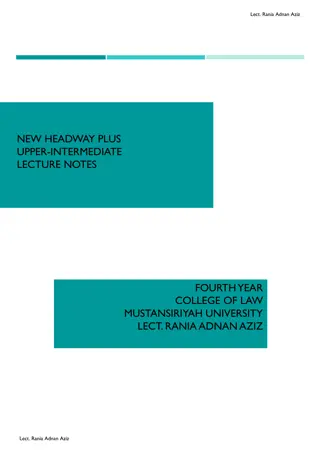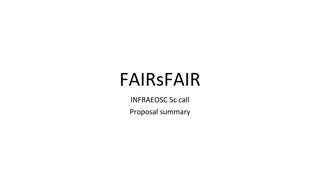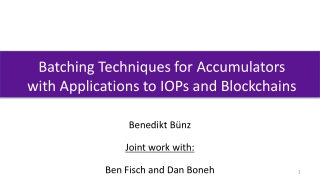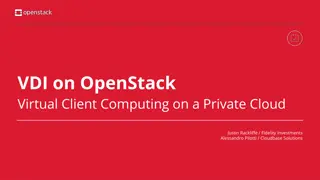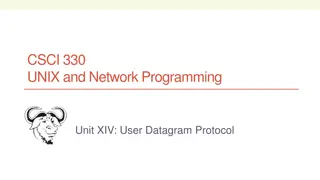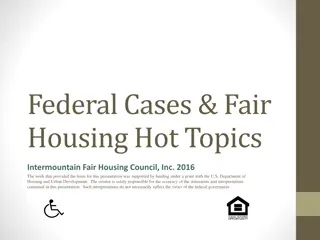Core-Stateless Fair Queueing: Past, Present, and Future
Fair queueing, a fundamental mechanism for fair bandwidth allocation in networks, has evolved over the years. Core-Stateless Fair Queueing (CSFQ), proposed two decades ago, offers a stateless solution but faces challenges for widespread adoption in data centers. The need for hierarchical fair queueing is highlighted for modern Data Center Networks (DCNs). Hardware support, coordination between switches, and advanced operations are crucial for achieving efficient packet management and fair share estimation.
Uploaded on Sep 29, 2024 | 0 Views
Download Presentation

Please find below an Image/Link to download the presentation.
The content on the website is provided AS IS for your information and personal use only. It may not be sold, licensed, or shared on other websites without obtaining consent from the author. Download presentation by click this link. If you encounter any issues during the download, it is possible that the publisher has removed the file from their server.
E N D
Presentation Transcript
Twenty Years After: Hierarchical Core-Stateless Fair Queueing Zhuolong Yu Jingfeng Wu, Vladimir Braverman, Ion Stoica, Xin Jin
Fair Queueing Fair queueing is a canonical mechanism to provide fair bandwidth allocation to network traffic. 10 8 2 4 2 4 5 There is a long history of research on fair queueing since 1980s. Still being studied: AFQ [NSDI 18], SP-PIFO [NSDI 19], Calendar Queue [NSDI 20] Require per-flow state Complex data structure and queue management (e.g., queue priority rotation) 1
Core-Stateless Fair Queueing (CSFQ) No per-flow state FQ CSFQ FQ CSFQ CSFQ FQ Core stateless CSFQ FQ CSFQ FQ FQ CSFQ FQ CSFQ Core-Stateless Fair Queueing Other Fair Queueing 2
Core-Stateless Fair Queueing (CSFQ) rate pkt pkt with label pkt rate estimator + packet labeling packet dropping packet dropping fair share estimator fair share estimator edge switch core switch 3
Core-Stateless Fair Queueing (CSFQ) Carried in the label Flow rate (fi) Fair share rate ( ) Packet drop ratio Maintained in every switch =4 Bandwidth=10 Flow rate Accepted rate 4 8 Drop ratio=50% 2 2 Drop ratio=0% 5 4 Drop ratio=20% 4
Core-Stateless Fair Queueing (CSFQ) CSFQ was proposed twenty years ago, but didn t take off Data center under a single administrative domain Requires changes to the packet header and coordination between switches in the network Needs hardware support to perform operations at line rate Programmable switches (fair share estimation, probabilistic drop, etc) 5
Core-Stateless Fair Queueing (CSFQ) CSFQ was proposed twenty years ago, but didn t take off Data center under a single administrative domain Requires changes to the packet header and coordination between switches in the network Traffic in DCN today is naturally structured in a multi-level hierarchy. Needs hardware support to perform operations at line rate Fair queueing is not enough (fair share estimation, probabilistic drop, etc) Need hierarchical fair queueing B4 A1 B1 B2 A2 B3 6
Hierarchical Fair Queueing 10 10 Tenant a Tenant a 8 2 8 2 4 2 3 2 Tenant b Tenant b 4 5 5 5 Fair Queueing Hierarchical Fair Queueing Existing solutions require per-flow state, complex queue management and a hierarchy of queues. 7
Hierarchical CSFQ HCSFQ enables hierarchical fair queueing on commodity hardware at line rate. Challenges Naively extending CSFQ to HCSFQ requires a hierarchy of queues The operations in CSFQ are not directly supported by primitives in programmable switches 8
Hierarchical Computation A na ve design HCSFQ design 9
Hierarchical Computation HCSFQ design f1+f2+f3+f4 Maintain aggregated states for each hierarchy f1+f2 f3+f4 f3 f4 f1 f2 10
Hierarchical Computation C=10 Tenant a 8 2 3 2 state f1+f2 f3 CSFQ is a special case that maintains only one aggregated node. HCSFQ 5 Tenant b 5 ?=10 ?1=10 =4 ?1=5 1 ?3=5 ?2=5 2 3 8 2 5 ?3=5 ?2=3 Drop ratio: 50% 0% 20% 8 2 5 5 Drop ratio: 62.5% 0% 0% 10 11
Data Plane Design packet length Rate estimator div exp mul time interval Probabilistic dropping random float fair share rate div arrival rate Fair share estimator dependency 12
Data Plane Design Current rate Rate estimator update per window Total bytes Within the window Window-based mechanism Probabilistic dropping fair share rate arrival rate Fair share estimator 13
Data Plane Design Current rate Rate estimator update per window Total bytes Within the window Window-based mechanism Probabilistic dropping Use bit shift to do multiplications Fair share estimator 14
Data Plane Design Current rate Rate estimator update per window Total bytes Within the window Window-based mechanism Probabilistic dropping Use bit shift to do multiplications Fair share estimator Use a small number of recirculation packets to update (at most one packet per window) Separately generated by switch to avoid reordering 15
Evaluation Testbed evaluation 6.5 Tbps Barefoot Tofino switch 5 servers with an 8-core CPU and a 40G NIC Simulation Simulator: Netbench Comparison: AFQ, SP-PIFO, TCP, DCTCP Topology: Leaf-spine topology 16
Evaluation 1. How HCSFQ works on the testbed 2. How HCSFQ works for a large-scaleDCN workload in simulations More results in the paper: Weighted fair queueing, Fair queueing with different TCP settings, The gap between prototype implementation and ideal theory, DCN workload with injected UDP traffic, Incast, DCN workload with multiple tenants. 17
Testbed Experiments 3x Fair queueing Hierarchical fair queueing 18
Large-scale DCN simulations Flow completion time breakdown for 70% load Average flow completion time for flows less than 100KB 19
Conclusion HCSFQ provides hierarchical fair queueing on hardware switches at line rate. HCSFQ requires no per-flow state at core switches and no hierarchical queue management. https://github.com/netx-repo/HCSFQ 20
Thank you! zhuolong@cs.jhu.edu 21
